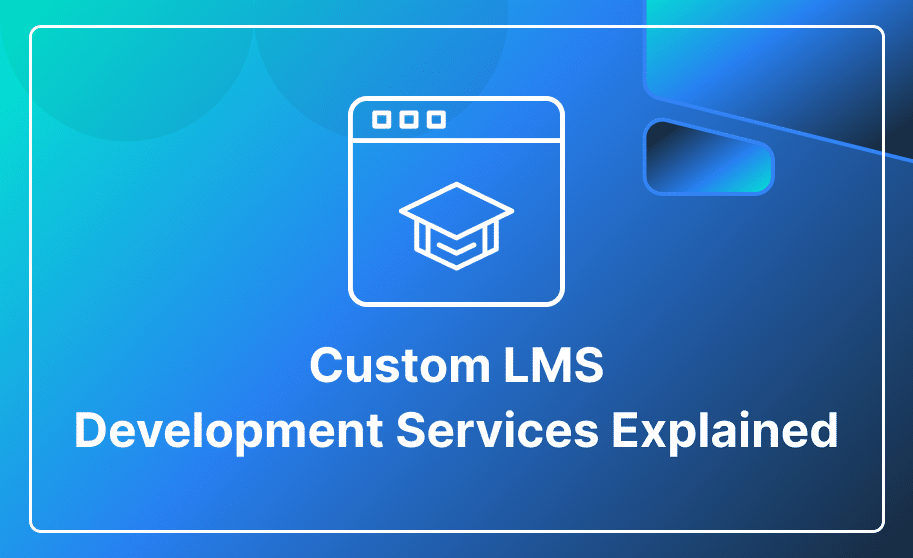During the 1950s and 1960s, computer science witnessed rapid advancements. This quick transformation initiated the establishment of a production framework, which later evolved into the Software Development Lifecycle (SDLC) as we recognize it today.
Any approach to the Software Development Life Cycle is a creative process where we bring code to life, fine-tune it, and enhance it to its best form. Creating a bright plan, having a substantial budget, staying updated with the latest software development trends, and selecting the right technology stack are the key factors for project success.
In this post, we’ve compiled reliable SDLC methodologies, providing a guide to assist you in choosing the most suitable one for your organization.
What is SDLC (Software Development Life Cycle)?
SDLC meaning; Software Development Life Cycle (SDLC), is an approach used in the software industry to design, develop, and test high-quality software. The objective of SDLC is to provide superior software that not only meets but exceeds customer expectations, all while being completed on time and within budget.
Explain SDLC and its Importance?
Managing software development can be challenging because of evolving requirements, technology advancements, and cross-functional collaboration. The Software Development Life Cycle (SDLC) methodology offers a structured management framework with well-defined deliverables at each stage of the software development process. Consequently, stakeholders can align on development objectives and requirements upfront and have a roadmap to achieve them.
- Some benefits of full lifecycle software development are listed below:
- It provides a standardized framework outlining activities and deliverables.
- Helps in project planning, estimation, and scheduling.
- It simplifies project tracking and control.
- It increases visibility across all software delivery lifecycle aspects for stakeholders involved in the development process.
- It speeds up the development process.
- It improves client relations.
- It reduces the project risks.
- It decreases production costs.
Understanding the Dynamics of Software Development Life Cycle: Models and Approaches
The process of building a software application is guided by The Software Development Life Cycle (SDLC), which outlines various tasks. Developers progress through several stages, integrating new features, and fixing bugs.
Following this, we’ll explore the different parts of the full Software Development Life Cycle.
- Analyze Customer Needs:
As expected, the first step is about understanding what your customers need. This phase is about collecting information from different sources and planning the process accordingly. It begins by determining what customers want, accessing the required resources needed, and finally planning the cost to ensure a successful and affordable development process.
2. Outline a Plan:
We plan the resources, costs, and other small details of the project before moving forward with the structure. Resources are something we can handle, but what requires close planning is the cost limit. The development teams need to ensure that everything is balanced properly.
3. Create a Design:
In the design phase, you have to create a design to define the overall framework based on your project requirements and the detailed plan. The design stage encompasses various aspects, including the project’s name, description, functionality, and the identification of key elements and technical gaps.
Typically, there are two levels of design – Low-level design (LLD) and High-level design (HLD).
4. Coding Phase:
This phase is among the most extensive stages in the software development life cycle. Developers take the lead here, doing what they are best at. They write the software code and implement it by following pre-defined code quality and coding standards, using the necessary programming tools.
5. Test the Progress:
Once the coding is done, the next step is to test the system’s functionality. This stage aims to verify if the entire software is operating as expected. Additionally, it aims to identify and address any bugs or technical glitches that may be present.
6. Deployment:
This is the significant moment everyone looks forward to. If developers find no issues in the testing phase, they proceed to launch the software product. It is crucial to emphasize that ensuring a smooth deployment process, free of errors, is equally important based on the feedback received.
7. Ongoing Maintenance:
After the deployment stage in software development life cycle models, it is important to begin observing various aspects once customers start using the product. It includes timely updates, prompt bug fixing, and the addition of the latest features. This phase is equally important as the initial one to maintain the efficiency and functionality of the software.

Phases of Software Development Life Cycle Models
SDLC methodologies refer to the approaches and techniques used by software development teams to navigate through the Software Development Life Cycle (SDLC) effectively.
The most common SDLC examples or models are listed below:
Waterfall Model
The waterfall model is one of the oldest and simplest examples of the software development life cycle, which includes five phases: requirements analysis, specification, design, implementation, unit testing or functional testing, integration, operation, and maintenance. This model guarantees the consistent use of minimal resources and the project’s unchanging behavior.
(It would be best to present the below points in the form of a table or an image)
- Project Size – Small, Concise
- Budget – Average
- Required Resources – Moderate
- Type of Project – One time
Agile Model
The agile methodology or agile model organizes the phases of the Software Development Life Cycle (SDLC) into several development cycles. The team iterates through these phases quickly, providing small, incremental changes to the software in each cycle. They consistently evaluate requirements, plans, and outcomes, allowing them to respond swiftly to changes. The agile model is both iteration and increment, making it a more effective approach compared to other process models.
- Project Size – Large
- Budget – High
- Required resources – High
- Type of Project – Continuous
Spiral Model
The Spiral Model in SDLC processes can be the best option when project requirements are unclear and frequent changes are expected. If your project requires assistance in both development and improvement, choosing this method is recommended.
It’s a prototype-based model with an iterative feature for developing new versions of the software. The risk-driven aspect of the spiral model allows customers to use a prototype, specification, or simulation-oriented approach for their project. This model also provides the flexibility to create highly customized products to meet the specific needs of customers.
- Project Size – Big
- Budget – High
- Required Resources – High
- Type of Project – Continuous
Scrum
For projects with massive architecture that demand continuous adaptation to market dynamics and evolving customer needs, the Agile-Scrum methodology stands out as an ideal process within the software development life cycle.
Scrum is an agile framework that assists in managing software development and design. It is used by small or medium-sized teams typically consisting of three to nine members. These teams work on larger projects and divide their tasks into time-boxed iterations known as sprints. The duration of a sprint can vary, lasting from one week to one month, depending on the specific requirements of the project.
- Project size – Large Scale
- Budget – High
- Required Resources – High
- Type of Project – Continuous
V-Shaped
In the V-shaped model, verification and validation phases run side by side. Each verification phase is linked to a validation phase, and the model runs in a V-shape, where each development phase has a corresponding testing phase.
- Project Size – Small, Medium
- Budget – Low
- Required Resources – Adequate
- Type of Project – One-Time
Lean:
The lean methodology in the software lifecycle is inspired by lean manufacturing practices and principles. These principles encourage creating a better flow of work processes and fostering a culture of continuous improvement.
The seven lean principles are:
- Eliminate things you don’t need.
- Learn as much as you can.
- Make decisions as late as possible.
- Deliver the product quickly.
- Build holistically.
- Empower the team.
- Project Size – Small
- Budget – Low
- Required Resources – Limited
- Type of Project – One-time
Feature Driven Development:
In Feature Driven Development (FDD) methodology developers create, design, and deploy the project and its overall structure based on the set of features. It is important to note that “features” in the context of the software development life cycle don’t mean typical software functionalities. Instead, they are quite similar to Scrum user stories.
- Project Size – Big
- Budget – Moderate
- Required Resources – High
- Type of Project – Continuous
Joint Application Development:
In a joint application development approach, experienced industry professionals work with IT experts from a Centre of Excellence (CoE). They work together to carefully plan the project from its early stages. Using the specifications and requirements collected during the planning, they shape the final software product. After the planning phase, customers can also be involved in the design stage to understand the actual expansion and execution of the project.
- Project Size – Medium or Big
- Budget – High
- Required resources – High
- Type of project – One-time
Rapid Application Development
When you’ve got a unique idea that requires complete confidentiality and aims to reach the market as an initiator to take advantage as a first-mover, Rapid application development is perfect for such projects. This software development life cycle methodology is flexible and works well when there is limited time for detailed planning.
- Project Size – Small and Medium
- Budget – High
- Required Resources – Moderate
- Type of Project – Long-term

Elevating Software Development with Proven SDLC Best Practices
Effective communication
Stands as the cornerstone of successful Software Development Life Cycle (SDLC) practices. Its pivotal role is emphasized by key indicators of a well-implemented SDLC.
Comprehensive Application Security Program
The hallmark of success is the successful deployment of a robust application security program, ensuring that the developed software is resilient against potential threats.
Code Quality Standards
A well-implemented SDLC upholds firm code quality standards, fostering the creation of reliable and efficient software products.
Effective Collaboration Across Teams
Seamless collaboration among diverse teams is essential, ensuring that different facets of development harmonize to achieve common goals.
Streamlined Workflows
An efficiently executed SDLC is characterized by streamlined workflows, minimizing redundancies and maximizing productivity at each stage of development.
Cross-Involvement of Teams Throughout the Life Cycle
Continuous involvement of cross-functional teams throughout the entire life cycle ensures a holistic perspective, leading to more informed decision-making and comprehensive problem-solving.
In essence, the successful integration of these best practices fortifies the foundation of an impactful SDLC, setting the stage for successful software development endeavors.
Conclusion:
Software Development Life Cycle (SDLC) is a well-defined process for creating high-quality, cost-effective software within the shortest timeframe. SDLC’s main goal is to develop and deliver outstanding software that exceeds customer expectations and requirements.
The field of IT has continually evolved software development life cycles through various trials and errors. Today, modern developers have the advantage of avoiding challenges that were faced by people years ago. We now have numerous proven and effective SDLC methodologies, offering wide-ranging benefits.
Explore our blog, “Our Software Development Process” for the entire guide to software development and gain a deeper understanding. The detailed exploration of a Software Development Life Cycle example in this guide serves as a valuable reference for understanding and implementing effective software development practices.
Hashlogics streamlines your software development life cycle. Our skilled developers deliver high-quality, secure software solutions. Let’s connect today!














